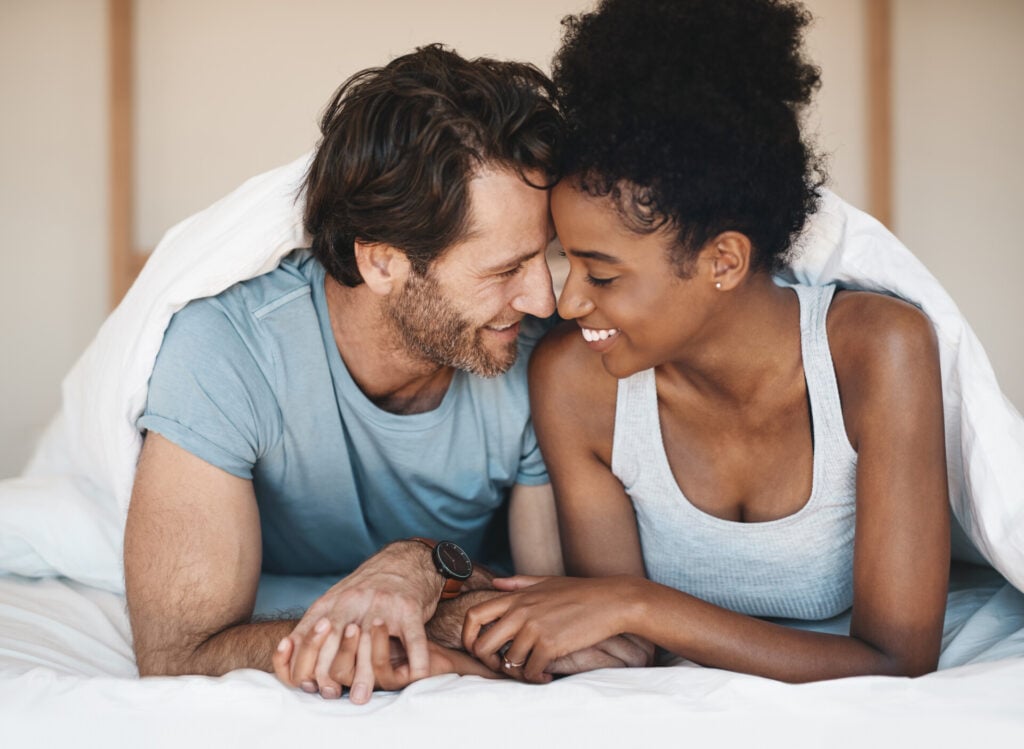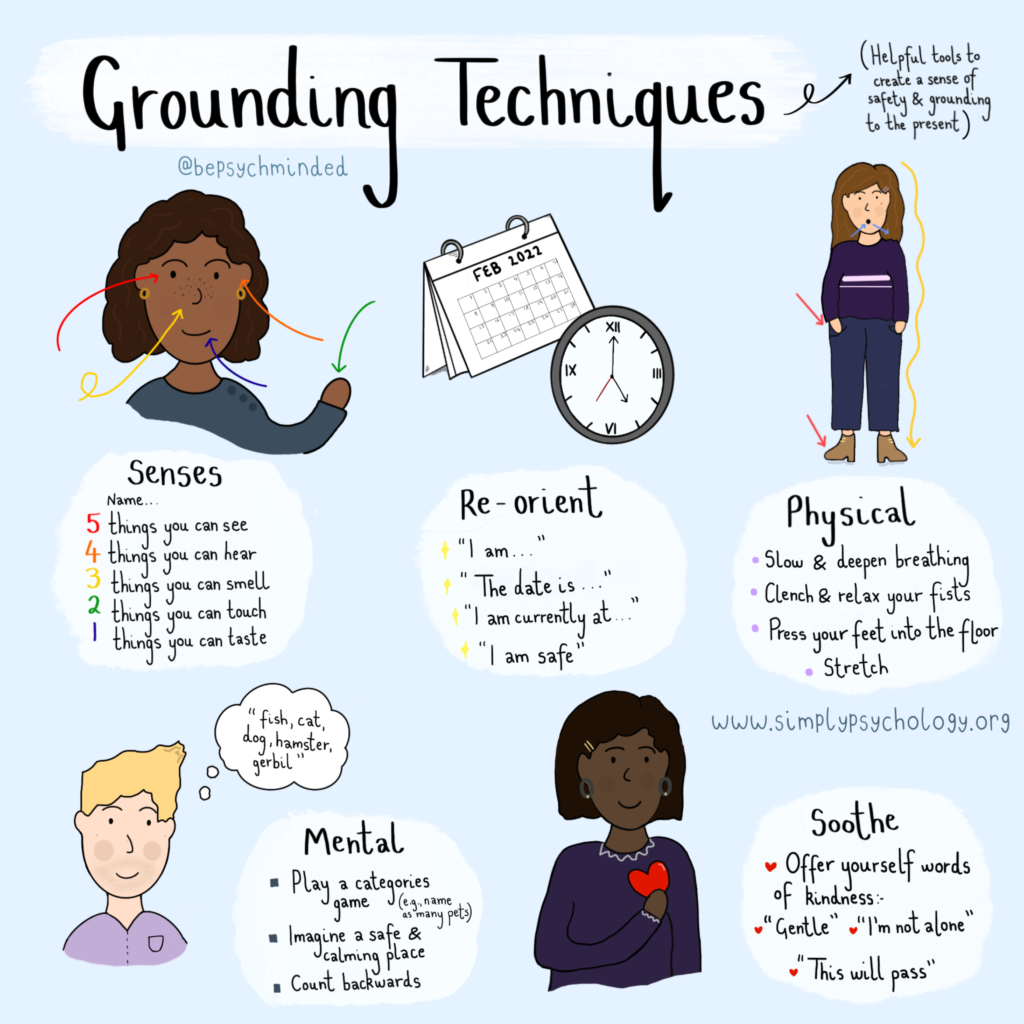Individuals with anxious attachment style typically have an overwhelming need for interpersonal approval, exhibit a strong desire for close emotional connections, and worry about being abandoned or rejected by their partners.
A person with an anxious attachment style is often preoccupied with their relationship(s) and constantly worries whether their partner and other significant people in their life love them.
They tend to seek constant reassurance and validation from their partners and may become overly dependent on them for their own emotional well-being.

Anxious attachment style, on the other hand, is often a result of growing up with inconsistent and unstable parental love and support.
When caregivers are unpredictable or anxious, children constantly monitor their closeness and behavior, preventing them from feeling safe to explore the world.
Because the anxious individual’s self-esteem is dependent on the closeness and approval of significant others, any instability will often lead to an undeveloped sense of self.
Understanding one’s attachment style can be helpful in identifying patterns of behavior and working towards more secure and fulfilling relationships.
As anxious individuals learn to heal their past wounds, trust and rely on others, and develop a more confident sense of self, they will grow to feel more assured and loved in their relationships.
Educate Yourself on Attachment Theory
To heal your attachment insecurities, it’s important to understand attachment theory, or the ways in which your early relationships with your caregivers shaped your social and emotional development throughout their life.
The aim is to understand the theory in the context of your life and relationships.
This way you can identify your patterns of thinking, feeling, and behaving when it comes to your relationships with others.
Maladaptive Beliefs Related to an Anxious Attachment Style
Early experiences and circumstances have a significant impact on the development of an anxious attachment style.
The child develops certain beliefs about the self and others that shape their adult relationships. Some of these beliefs include:
- Defectiveness: Anxious individuals tend to believe they are “broken” and unworthy of love. They search for confirmation of this belief, making them hypervigilant to signs that their partner does not love them or thinks they are not good enough.
- Abandonment: They have an intense fear of being abandoned and rejected. To cope with this fear, anxious individuals tend to cling to their partners. They can be demanding, jealous, and controlling. Although the aim is to keep their partner close and avoid abandonment, this can result in their partner pulling away, confirming their fears.
- Helplessness: Anxious individuals are inclined to believe that they are incapable of comforting and helping themselves. They want and expect others to provide this security for them and to be completely responsive to their needs. This often results in disappointment, further confirming their perceived unworthiness and defectiveness.
- Conditional Worth: Because of their underdeveloped sense of self, anxious individuals believe that their worth depends on the approval and love of others.
- Distrust: Anxious individuals generally distrust other people and themselves. They are haunted by the belief that others do not love them as much as they do and that they will eventually reject and abandon them. They do not trust their ability to cope with life and fear being alone.
Changing Maladaptive Beliefs
Although these maladaptive beliefs are coping mechanisms that served a purpose growing up, they can have a negative impact on one’s well-being and ability to form healthy relationships.
These beliefs, and related behaviors (e.g., clinginess), are subconsciously activated whenever there are certain emotional triggers.
Emotional Triggers for Individuals with an Anxious Attachment Style
The first step in transforming these beliefs into more helpful ones is self-awareness. That means becoming conscious of the maladaptive beliefs you may hold about yourself and others, as well as identifying your emotional triggers.
Relationships, in general, are a great source of anxiety for anxiously attached individuals. But there are certain scenarios and behaviors that they find particularly triggering. These include:
- Their partner acting inconsistently (hot-and-cold behavior)
- Their partner not responding or taking a long time to respond
- Avoidant behaviors (e.g., being physically rejected; communication being shut down; the other person walking away)
- A friend spending more time with other people
- Experiencing emotional distress
- Feeling criticized/ rejected
- Being alone
- Perceiving a response to be cold or dismissive
- When their partner seems distant or distracted
- Someone forgetting an important event, such as a birthday or anniversary
- Their partner coming home late or being late to a reservation
- Their partner not noticing something new (e.g., a new haircut or outfit)
Situations and behaviors like these trigger intense and overwhelming emotions in anxious individuals because, in their eyes, they are signs of rejection and abandonment – their greatest fear.
To cope with these emotions and to avoid feeling rejected, they subconsciously employ “hyperactivating strategies.”
These are behaviors aimed at keeping their partner close but, unfortunately, they often have the opposite effect and push their partner further away.
Hyperactivating Strategies
Anxiously attached individuals have hyperactive attachment systems. This means their coping mechanisms in the face of distress are extreme and disproportionate.
Securely attached people seek reassurance and comfort from significant others when they are experiencing distress – This is considered a healthy and effective coping strategy.
People with an avoidant attachment style deactivate their need for intimacy and comfort, while people with an anxious attached rely on the reassurance, approval, and validation of others.
When anxiously attached people experience an emotional trigger, they are faced with an intense fear of abandonment that stems from traumatic or unstable childhood experiences. To avoid this feeling (and actual abandonment), they often go to extreme measures.
Examples of hyperactivating strategies include:
- Clinging (obsessive and suffocating behavior)
- Feeling jealous (even when it is not warranted)
- Demanding reassurance and attention
- Expecting others to soothe their emotional distress
- Having emotional outbursts (e.g., crying or becoming angry)
- Ruminating/ overthinking the relationship and their partner’s behavior
- Stalking someone in real life or on social media
- Calling/ texting often and persistently (especially if they are awaiting a response)
- Allowing others to violate their boundaries so they will not leave/ reject them
For anxiously attached people, the fear of being rejected and abandoned is very real. They may therefore believe their responses and behaviors are justified.
They may believe that the responsibility lies with their partner/friend/family member, and that if these individuals were more caring, supportive, and loving, they would not experience this kind of anxiety.
However, the true cause of the overwhelming fear is low self-esteem, often stemming from unstable or difficult relationships in childhood/ adolescence.
Therefore, feeling less anxious and more secure in relationships means healing yourself, building your self-esteem, and taking control of your emotions and behaviors.
It means stepping into your power and learning that it’s okay to be alone and that you are capable of being there for yourself.
Healing an Anxious Attachment Style
Healthy and stable relationships are integral to our well-being and boost our self-esteem and quality of life. This applies not only to relationships with other people, but also to our relationships with ourselves.
If you have an anxious attachment style, you probably spend much of your time ruminating about other people, especially your romantic partners and close friends.
- What are they thinking?
- What did they mean when they said that?
- Why are they behaving this way?
This preoccupation means you are neglecting yourself, your needs, and what you truly want.
Thus, healing an anxious attachment style requires you to work on the relationship you have with yourself. Your sense of self-worth should be independent of other people and how they feel or behave towards you.
Having a secure attachment style means:
- Communicating your needs and wishes openly and assertively
- Being able to see the world from another person’s perspective
- Reflecting on your behaviors and mental state objectively
- Trusting other people and yourself
- Having stable self-esteem
- Feeling worthy of love and respect
- Establishing and maintaining boundaries
Developing a more secure attachment is entirely possible but it’s a journey that requires hard work, patience, and compassion. Here is some advice to get you started:
Make Time for Self-Care
Making time for self-care is an important step in getting to know yourself and enjoying your own company. It means you are making time for what you love doing and taking care of your needs, which will help you feel less anxious in life and relationships.
Self-care refers to deliberate actions and practices that individuals engage in to promote their physical, mental, and emotional well-being. Looking after your body can include exercising regularly, maintaining a balanced diet, and practicing good hygiene.
Other common examples of self-care include: journaling, practicing mindfulness, going to therapy, spending time in nature, or seeking social support from loved ones.
You could also try a new hobby, like drawing, kayaking, or hiking. Anything that makes you recharged, nurtured, and healthy can be considered self-care and can help you on your journey to transforming your attachment style.
Consider Therapy
Having an insecure attachment style is more likely an indication of having experienced difficulties in childhood and adolescence. Therefore, engaging with a therapist who can explore any unhelpful beliefs, emotional triggers, and anxious behaviors can be immensely beneficial.
They can provide guidance, support, and tools to help you explore and develop a more secure attachment style.
There are attachment-specific therapies, such as schema therapy or attachment-based therapy, but any type of therapy or counseling can be helpful.
Find a Surrogate Attachment Figure
A securely attached role model can help you to learn how to feel more secure in relationships. It could be a friend, partner, or mentor who gives you insight into what a securely attached relationship looks and feels like.
It’s always helpful to ask yourself: how would someone with a secure attachment behave?
You can also observe and imitate their behavior and find out how they interpret ambiguous situations, such as when their partner does not reply to a text message or arrives late to a date.
You can ask them how they manage their anxiety and difficult emotions and how they communicate problems to their significant others.
Develop Self-Awareness
Pay attention to your thoughts, feelings, and behaviors in relationships. Notice any patterns or triggers that activate your attachment insecurities. By becoming more aware of your reactions, you can begin to challenge and reframe negative beliefs and responses.
Keeping a journal for when you experience difficult emotions might be useful. You can write down what triggered them, what you fear might happen, how you behaved, and how you want to cope.
This will allow you to notice patterns in your thoughts, feeling, and behaviors.
Once you are aware of these automatic thoughts and behaviors, you will get better at recognizing them in the moment and actively challenging them.
Learn to Trust Yourself
When you trust and rely on yourself for comfort and support, you are no longer dependent on other people.
That does not mean you cannot share your feelings with other people and seek reassurance and encouragement from them. It just means you can soothe your own distress without relying on other people to do that for you.
This will empower you and allow you to communicate more effectively, thus improving the overall quality of your relationships.
Learning to trust in your ability to cope and be happy on your own means having effective ways to manage your anxiety.
Managing Anxiety/ Regulating Emotions
Hyperactivating strategies, like clinging, controlling, and demanding, will only serve to make your anxiety worse.
Learning to sit with your emotions and finding healthy ways to manage your anxiety will be much more effective.
Instead, when you are experiencing anxiety that you perceive to be caused by your partner’s behavior, turn your attention inward, rather than on the other person.
You cannot control other people and what they say or do, but you can control how you manage your feelings and behaviors.
Some helpful self-regulation activities include:
- Progressive muscle relaxation (consciously relaxing each muscle in your body)
- Breathing exercises
- Meditation/ yoga
- Going for a walk
- Watching your favorite TV show
- Exercising
- Journaling
- Other grounding exercises like holding an ice cube in your hand or drinking herbal tea
- Rationalizing (e.g., How likely is it because they are rejecting you? What other explanations might there be? What is the rational/ objective explanation?)

Practice Behavioral Experiments
To change unhelpful beliefs, you need evidence that contradicts them, and this is best done through behavioral experiments.
When doing these, it’s best to start small and work your way up, as the anxiety might be quite high at first.
Over time, the anxiety will reduce. It can be helpful to use emotion regulation strategies (e.g., body relaxation, breathing, journaling) while trying out the new behaviors.
In this case, the experiments should involve testing out secure behaviors, such as:
- Spend time alone (that includes putting your phone away)
- When someone does not reply immediately, let it happen, put your phone away, and do something else that will distract and calm you
- Communicate your feelings and needs to your significant other without becoming emotional – stay calm and assertive
- When you are feeling distressed, try some of the self-regulation activities mentioned above
- Establish and maintain boundaries (e.g., when someone does something you do not like, stand up for yourself, communicate this calmly and assertively, and walk away if necessary)
Setting Boundaries
Setting (and sticking to) your boundaries is an important part of healing your relationship with yourself and learning to feel more secure in relationships.
This means not allowing others to treat you poorly and demanding they respect you and your needs. It also means you respect yourself and trust yourself to know what is best for you.
Here is some advice on establishing boundaries:
- Identify what your values are/ what is important to you in your life
- Putting everyone else’s opinions and needs aside, what do YOU need from a relationship?
- Examine your relationships – what are the unhealthy aspects?
- In your view, what does it mean to be a healthy, independent adult?
- Focus on your strengths and the things you do well
- Identify and utilize your protective factors (things that make it easier for you to deal with stress), such as certain relationships, social support, work, school/ university, values, problem-solving skills, etc.
- Now, think about establishing boundaries with significant others. Do you want a relationship with them? What do you want to share and not share with them? Where are the limits?
Once you have established your boundaries, you can communicate these to others at an appropriate time. Let them know how you will respond if they do not respect your boundaries and stick to that.
Remember, saying no to someone else often means you are saying yes to yourself. When you have a healthy, trusting relationship with yourself, you are much more able to have healthy relationships with other people, too.
Take Control
Transforming your attachment style is difficult and takes a lot of effort at first. But over time, it will get easier, and you will reap the benefits of having healthier relationships.
You must take control of your journey and make it your responsibility to heal yourself and your insecurities. Placing blame on other people might feel easier, but this will only keep you stuck in unhelpful patterns of feeling and behaving.
Here is a summary of healing an anxious attachment style:
- Develop self-awareness and become conscious of unhelpful beliefs and behaviors
- Learn to trust in your ability to comfort and stand up for yourself
- Do not rely on other people to make you feel better – learn to do that for yourself
- Practice emotional self-regulation and behavioral experiments
- Actively challenge your negative thinking patterns
- Set and maintain boundaries
- Make time for self-care and find what you enjoy
- Take control of your healing journey
Sources
Candel, O.S. & Turliuc, M.N. (2019). Insecure attachment and relationship satisfaction: A meta-analysis of actor and partner associations. Personality and Individual Differences, 147: 190-199.
Olufowote, R.A.D., Fife, S.T., Schleiden, C. & Whiting, J.B. How Can I Become More Secure? A Grounded Theory of Earning Secure Attachment. Journal of Marital and Family Therapy. 46 (3): 489-506.
Shaver, P.R. & Mikulincer, M. (2002). Attachment-related psychodynamics. Attachment and Human Development, 4 (2), 133-161.
Simpson, J.A., Steven, R.W. (2017) Adult Attachment, Stress, and Romantic Relationships. Current Opinions in Psychology. 13: 19-24.


